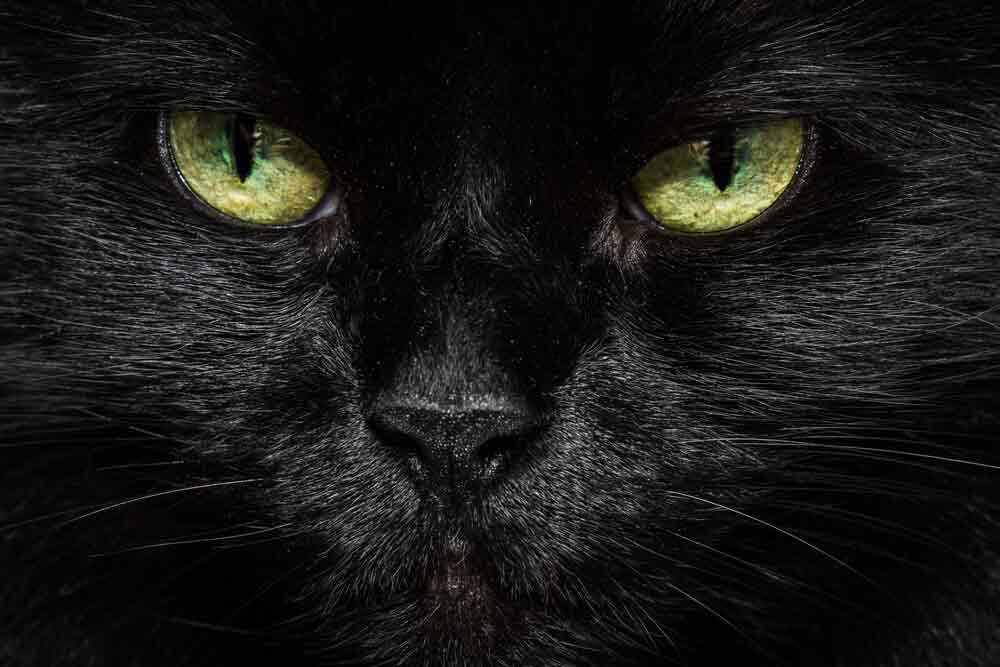Suppose you are looking at a red apple on the table or trying to find your friend’s hairband in their brightly colored toy box, but you don’t know where it is. You call upon your cat to help you. However, instead of distinguishing between colors like all the other animals (including humans), cats seem to only see in shades of gray and blue! Is there truly anything that separates them from other animals?
Are cats color blind? What does science say? Although no one seems sure exactly what makes up a cat’s eyesight, it has been said by some researchers that they can distinguish between blues and grays, but not much else past those two colors. But animal physiologists have recently discovered
Cats are color blind? No, not all of them. Most of them actually see some colors but they can’t distinguish between the colors as we do.
It is a fact that cats don’t have perfect eyesight and they tend to lose their hair on some parts of the body. They also cannot perceive red and green colors at all just like most mutated monkeys and apes which possess this rare genetic mutation called Tritanopia or Complete Atonia.
This means that their vision is similar to having red-green color blindness.
Why you may ask? The answer lies in the cones which are photoreceptors located in the retina at the back of the eye. Cones help with color vision and when there’s only one kind present (like in most mammals), they’re called “color-seeing” or “trichromatic”. Just like when you were born (and some people still are) your eyes can see 3 primary colors of light, so do cats’ eyes also see 3 primary colors of light? The answer is yes but they have a 4th cone that isn’t sensitive to any color so it doesn’t respond at all. This 4th cone causes them to be dichromatic.
So your cat sees some colors but not as many as humans do, which makes us trichromatic and them dichromatic? Yes, that is correct! They can still see a few colors especially if their green cone is working. Cats have 2 cones sensitive to green light so they can see some shades of yellow as well as blue and gray. In addition to the cones, cats also have rods which are photoreceptors used for vision under low lighting conditions. Unlike cones though, rods cannot distinguish between colors so cats rely more heavily on their other senses such as smell and hearing when it’s dark outside or inside the house where they want to hunt mice at night. This explains why cats’ eyes seem brighter at night.
Are all cats color blind? Most of them actually see some colors but they can’t distinguish between the colors as we do and this is mainly due to their cone structure (human beings have trichromatic vision because each of our 3 cones has different sensitivity for different wavelengths along the visible light spectrum) . But it isn’t their “fault” that they are color blind, it’s just how God made them! Please if you want to post information about cats’ eyesight on your social media sites, please make sure to use the buttons below so more people will read this article. Thank you!
What is color blindness?
What types of color blindness are there? And what is the treatment for color blindness?
Symptoms and Causes of Cat Eye Problems
What’s that lump on my cat’s eye? Get familiar with cat-eye problems here. Symptoms of common feline eye diseases and what to do if you discover them.
Cat owners will be pleased to know their pets aren’t color blind, after all – so long as they don’t mind seeing everything in shades of yellow or blue-grey. A new study explores the question: What does your pet see? By examining the eyes of a variety of cats (and dogs), researchers from Washington University were surprised to find that those pets actually can distinguish colors. It seems like they’re not exactly like us (we rely on three types of cones, but cats have only two), but at least they can see what we mean when we say “look at the purple flowers”.
How can I stimulate the cat’s eyes, cat’s vision?
The way a cat sees things is very different from the way we see them. Their vision may seem to us to be less colorful, but it is actually superior in many ways. The retina of a cat’s eye has more rods than cones. Rods are extremely sensitive to light and allow the eyes of cats (and nocturnal animals like owls) to capture any available light. They play an important role in peripheral vision at night but do not help our pet see well in bright light or distinguish colors. Cones on the other hand give cats good visual acuity during daylight hours and they also perceive color very well.
Color blindness can be either acquired or inherited depending on the types involved (there are two main categories namely, protanopia, deuteranopia). It can also be congenital or genetic.
Some people are born color blind while some acquire the condition due to eye diseases. Cataracts are one of the common causes of acquired color blindness. As they develop, cataracts affect vision by making colors appear faded and less distinct.
Usually, it is difficult for doctors to identify whether a specific human patient has color blindness simply based on their symptoms alone because there are no tests available that can make an accurate diagnosis. The only way to know for sure is through clinical evaluation using various kinds of tests. However, these diagnostic methods can be expensive and time-consuming which means that not every patient will have access to them especially those living in developing countries where medical facilities are inadequate.
In such cases, you will need to consult a general physician who can do a physical exam as well as some other tests to rule out any serious disease. If your cat is experiencing problems with its eyes or vision, you should be able to observe them from outside your home. You must check whether the pupils of their eyes are dilated and if they’re moving around in erratic ways when exposed to bright light.
Unlike humans, cats cannot tell us how much they can see but you’ll usually notice them bumping into things when it’s dark outside or inside the house where they want to hunt mice at night. This explains why cats’ eyes seem brighter at night.
Cats have excellent night vision thanks to their highly developed rod cells which are more sensitive to light than the cones. On the other hand, their cone cells allow them to see well in bright light but not perfect colors.
They may not be able to distinguish between different hues, but they can certainly make out sharp contrasts like black and white or dark and light.
Can a cat see in the dark?
Cats can see in the dark by using light reflected from the tapetum lucidum (a thin layer of tissue behind the retina composed mostly of guanine) to make up for not having as many cones as humans do. But even though they can see well in low-light environments, their eyes need a few moments to adjust before they’re able to function properly.
What does a cat’s vision feel like?
A cat’s vision is different from that of a human being and it may give an impression that colors are muted or faded compared to what we see on a daily basis. This means cats rely more on their other senses such as hearing and smelling which helps them become better hunters as they can detect subtle changes in noises and scents.
However, their vision is similar to that of humans suffering from colorblindness because cats have trouble distinguishing between red and green hues. They may also see some colors as grayish or bluish tints which are extremely faint compared to the primary colors we’re used to seeing every day.
This suggests that it’s more difficult for them to distinguish between other colors like orange, yellow, blue, or purple even if they can identify these hues by name. So even though your pet enjoys playing with colorful objects, it doesn’t mean he/she prefers them over toys in other available colors.
Cats are not alone in this aspect since dogs also suffer from partial colorblindness although the extent varies among different breeds. So, you cannot assume that your pet is colorblind simply by comparing his/her behavior to other animals.
If you’d like to test your cat’s level of color vision, there are some available on the market but they’re not 100% accurate because results may vary. But if you observe and compare their reactions to different colors, it should give you a better idea of whether they can see certain hues more than others. If they show no interest in the colored object at all or only try to play with it when it’s within an arm’s reach, then chances are they might be suffering from red-green colorblindness.
How do I make sure my cat can see?
There are several things you can do to know if your cat has problems with his/her vision. You can look for any indications that appear when they bump into objects in their paths, walk past familiar landmarks, use the litter box, position themselves in high places, or meow when there’s no apparent reason to do so.
A visit to the veterinarian is necessary if you notice any unusual eye discharges or swelling around the eyes which could indicate an underlying health issue affecting these organs. The same goes for excessive blinking, squinting, or pawing at their faces because it might be a sign of irritation resulting from poor lighting conditions inside the house.
If your cat seems lethargic and shows less interest in playing compared to before even though he/she enjoys social interaction with you, it may suggest a possible weakening of vision.
You can also try to test your pet’s ability to distinguish between different colors by using two plates filled with food and place them at equal distances from him/her. Leave the plate that’s seen as grayish or bluish slightly closer than the other one, then watch how your cat chooses to eat from one of them.
Reducing direct lighting should make it easier for you to notice if your pet shows any signs of having difficulty seeing under bright light conditions. When you’re indoors, choose blinds that screen out ultraviolet rays from entering the windows and use lamps instead because they give off softer and warmer light compared to fluorescent fixtures which tend to be very bright and cold-toned.





